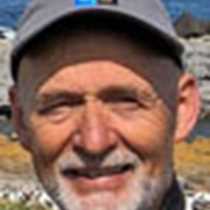Tysfjorden & Hellemobotn, Norway
National Geographic photographer Jay Dickman started the program of the day with a very instructive lecture on nature photography. Just as Jay was about to finish his talk, a sighting of pilot whales straight ahead of the National Geographic Explorer was announced. Our position was just about in the middle of Tysfjorden, a long fjord that cuts almost into the Swedish border. Eager guests and staff rushed to their cabins and within minutes a large number of onlookers occupied strategic positions with cameras and binoculars on the front deck. Captain Oliver Krauss and his officers slowed the speed of the ship and moved her smoothly around a fairly large pod of pilot whales. As we moved closer to the whales, they continued their acrobatics at the sea surface, after a while the whales came quite close to the ship. Underwater Specialist, Dennis Cornejo, got into a Zodiac with an underwater video camera mounted on a long rod. Just as a handful of the whales came up to the Zodiac, Dennis dipped the rod into the sea and started recording what was going on beneath the surface. A considerable number of whales – the pod must have consisted of nearly a couple of dozen – continued to stick their heads above the surface and some of them breached quite frequently. The show was accompanied by clicking cameras and sounds of awe from the people on deck. We hardly believed what we were seeing! The animals seemed relaxed and were obviously curious to check out who we were. After a good hour the performance ceased and the whales lead the way towards the inner part of the fjord – like real pilots – just in the direction we were heading. One of the locals we met in Hellemobotn in the late afternoon told us that pilot whales annually appear in Tysfjorden, searching for small-size herring that can be found here in large quantities by the end of summer.
After lunch, most of our guests chose to go hiking in a beautiful pine forest. The hikers followed a marked trail that reaches into Sweden. The medium hikers got up to a splashing waterfall, whereas the “long-long” hikers fought to an elevation of more than a thousand feet, reaching above the tree line. Various wild berries could be seen along the trail: wild raspberries, blueberries, bog bilberries, crowberries and cloudberries. Our photo specialists gave useful advice to those who wanted to improve their photographic skills in the field. Some guests preferred to go kayaking or take a Zodiac cruise. The medium and short hikers also had the option to do the same upon their return.
A couple of staff members got in touch with one of the locals who was staying in his summer house in Hellemobotn. He told us that Hellemobotn had been permanently inhabited by Samis until 1967. Two Lule-Sami families who originally came from a settlement of reindeer herders further to the east, had made their living in Hellemobotn as sea Samis, combining salmon fishing, hunting and small scale farming. Today the houses and cabins in Hellemobotn are used for leisure purposes only. The recap just before dinner naturally started with a short presentation on Sami culture and Sami rights in Norway. After our exciting encounter with whales this morning, pilot whales dominated the rest of our recap. Dennis Cornejo rounded off by showing incredible underwater footage of these charming marine mammals. After dinner many guests went out on deck to get a glimpse of Stetind, which was a few years ago elected Norway´s National Mountain. A glowing sunset marked the perfect end of our first full day of exploration in the fjords of Norway.



